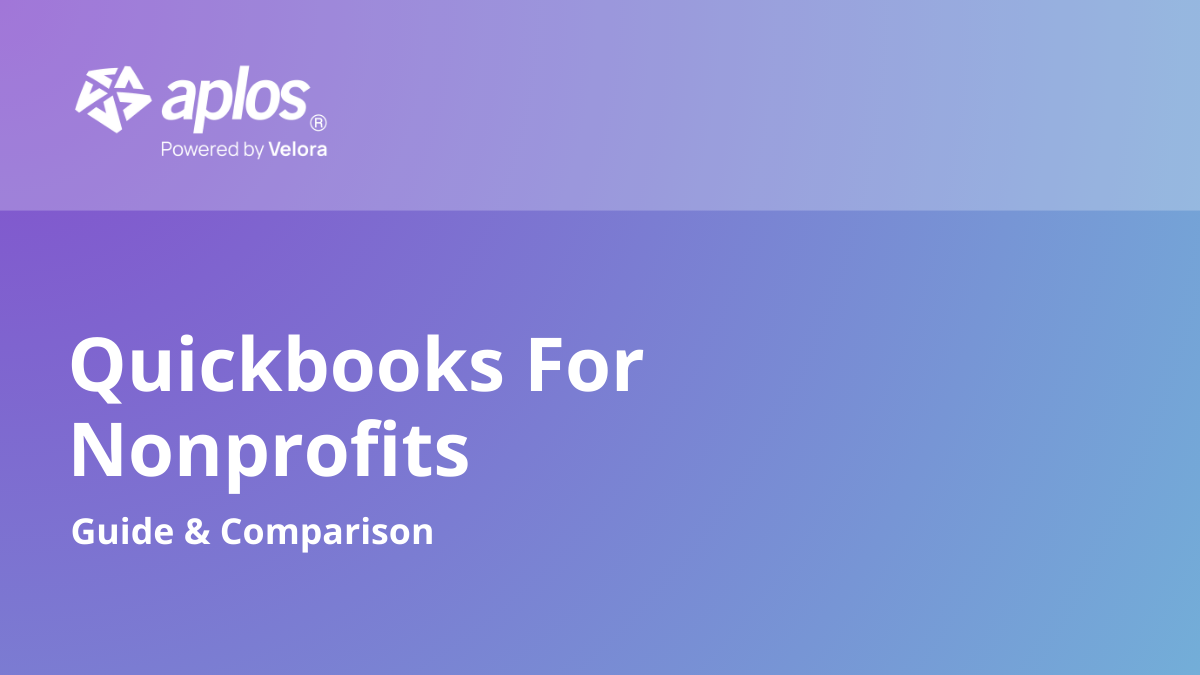
Can Nonprofits Charge for Services or Goods?

A common question that is asked by nonprofits and people in the community is whether or not a nonprofit organization can charge for products or services. Due to the public assumption that nonprofit organizations are not supposed to be able to generate any type of income, events and fundraisers where goods and services are being sold can sometimes be looked at with suspicion.
Get better nonprofit management with Aplos. Try it free for 15 days.
Below, we will explain some of the challenges and tax risks nonprofits face when products and services are sold to support their mission.
It Is Quite Common for Nonprofits to Provide Services or Sell Products to Support Their Mission
While nonprofits lean heavily on contributions from donors to achieve their goals, these donations typically aren’t enough to support the mission on their own. If you have ever been to an event that is being hosted by a nonprofit or church, there is a very strong chance that goods or services were being sold in some form to support the cause of that organization.
Multiple revenue streams are vital when it comes to the success of a nonprofit, and the sales of services and/or goods when fundraising can go a long way toward providing needed revenue. With regards to its legality, it is 100% legal in the eyes of the IRS for a nonprofit organization to offer goods or services for sale—as long as all proceeds are used to support its mission.

The Basics of UBIT
We have now established that nonprofits can charge for services or goods as long as all income is being used for the organization’s mission. While this sounds straightforward, there are some fine lines that could fall into UBIT territory if you are not careful.
What Is UBIT?
UBIT is short for Unrelated Business Income Tax. The IRS uses the following criteria to determine if your business income is unrelated to your organization’s mission:
- It is a trade or business
- It is carried out on a regular basis
- It is not substantially related to furthering the exempt purpose of the organization
For example, if your nonprofit chooses to have a bake sale one Saturday, proceeds will likely not be subject to UBIT. However, if you run a sandwich shop as a side business to generate funds for your nonprofit, sales from those sandwiches will likely be subject to UBIT.
Utilizing Donations Over Fees for Services
One way that many nonprofits avoid getting hit with UBIT is by suggesting a voluntary donation instead of charging a fee. Some nonprofits that host fundraising events will give attendees the opportunity to give a gift for services rendered instead of charging fees. They may place a donation box at the entrance of an event where admission is free. There are no fees involved to enter the event, but a donation is encouraged by the presence of a donation box.
There is also a psychological benefit behind giving that cannot be fully expanded on in a brief article such as this, but to summarize, evidence has shown that most people prefer to make a donation of some sort instead of receiving something absolutely free—even when things are financially tight. For example, if you go out to dinner and your waiter or waitress gives you something free of charge instead of adding it to the bill, the typical response to this generosity would be to leave a bigger tip.
Ultimately, shifting the mindset of your nonprofit toward donations rather than a fee-for-service model will not only protect you from any tax implications, but it will also typically increase the number and amount of donations you receive.
Tools to Manage Donors and Donations
Organizing a fundraising event can be an extremely hectic and challenging endeavor. Throw the management of donors and corresponding donations in the mix, and it can add up to a very stressful situation.
Fortunately, it is possible for you to save time and reduce the stress associated with coordinating events, whether they are large or small. Aplos Software provides solutions to address the unique needs of nonprofit organizations.
This article is not meant to be a substitute for professional services. Always consult a CPA or trusted professional when seeking tax or accounting advice.
Free eBook: The Essential Reports Your Nonprofit Needs
When running a nonprofit, it is crucial to have a well-formulated system to get the exact reports your board is asking for. In this eBook, we go into detail about the essential reports nonprofits need. We also cover why the reports matter and demonstrate how to build and streamline these reports. You will learn:
- What the essential nonprofit reports are
- Best practices for creating reports to fit your organization’s needs
- How to customize your bookkeeping to make reporting simple
Frequently Asked Questions
Can a nonprofit charge for products or services?
Yes. The IRS allows nonprofits to sell goods or services so long as all proceeds are used to support the organization's mission.
What is UBIT?
UBIT is Unrelated Business Income Tax; IRS looks at trade or business, regularity, and whether income is substantially related to your mission.
What is an example of related versus unrelated sales?
A one-day bake sale likely avoids UBIT; running a sandwich shop as a side business likely triggers UBIT.
How can you avoid UBIT when offering services?
Encourage voluntary donations instead of fees: free admission, donation boxes, and asking for gifts can protect you from tax implications.
What tools does Aplos offer for fundraising and donors?
Aplos Software provides solutions to manage donors, donations, and streamline fundraising event management.

Our comprehensive closeout services start at $399 per month that needs to be reconciled. Sign up before Jan 1st and pay just $199.50 per month!
Copyright © 2025 Aplos Software, LLC. All rights reserved.
Aplos partners with Stripe Payments Company for money transmission services and account services with funds held at Fifth Third Bank N.A., Member FDIC.
Copyright © 2024 Aplos Software, LLC. All rights reserved.
Aplos partners with Stripe Payments Company for money transmission services and account services with funds held at Fifth Third Bank N.A., Member FDIC.



.png)



